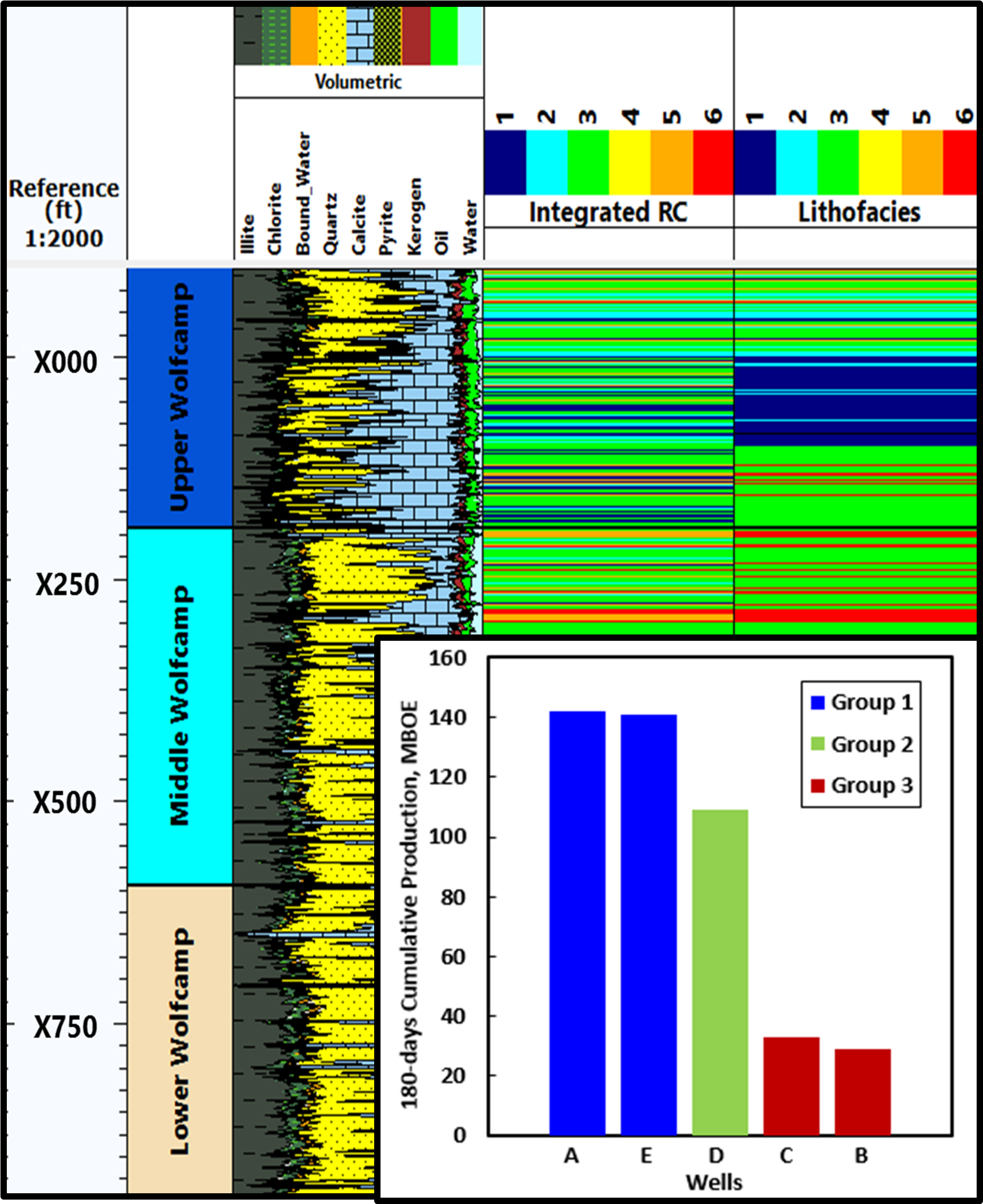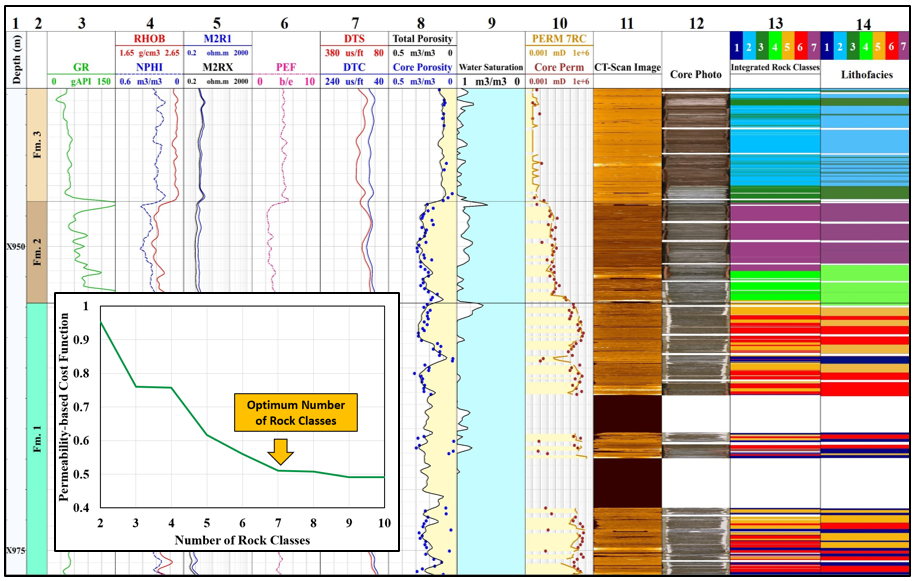The following list includes the project we have been working on recently. We have had exciting achievements in many of these general topics as described in our publications and reports. Please contact us if you would like to receive more information about these projects. The number of projects that we will work on during the upcoming academic year will depend on the number of industry members supporting our research program. We prioritize the projects which are of interest to our industry members. We have many interesting upcoming projects. Please contact us, if you would like to know more about our future plans.

➨ Develop Advanced Core Analysis Techniques for Petrophysical Evaluation
We perform laboratory experiments as well as numerical simulations for better understanding of rock physics in spatially heterogeneous, tight, and unconventional reservoirs. The three long-term objectives we pursue in our experimental projects are as follows:
Goal 1: To improve the interpretation of the available core measurement techniques,
Goal 2: To provide algorithms for reliable petrophysical evaluation of complex reservoirs based on core measurements, and
Goal 3: To develop new core measurement techniques applicable to unconventional, spatially heterogeneous and/or tight rocks.
The term unconventional refers to formations with complex pore/matrix structure and composition, where conventional rock physics interpretation and measurement methods fail to perform reliably, such as organic-rich mudrocks, complex carbonate formations and unconventional reservoirs including tight-gas sand, coal-bed methane, and naturally fractured reservoirs.

➨ Develop New Methods for Rock Fabric Quantification
Rock fabric refers to spatial distribution of solid and fluid rock components. We develop (a) multi-scale imaging and (b) multi-physics data analysis (e.g., joint interpretation of NMR and electromagnetic measurements) methods for quantification of rock fabric. The quantified rock fabric can then be an input to rock physics models for enhanced formation evaluation. Examples of research projects in this category are as follows:
- Quantify the Effects of Rock Fabric on Physical Properties (e.g., Electrical and Mechanical Properties) of Formations with Complex Rock Physics (e.g., Organic-Rich Mudrocks and Carbonates)
- Develop Rock Physics Models Assimilating Realistic and Quantitative Rock Fabric
- Develop Upscaling Techniques Honoring Multi-Scale Rock Fabric for Improved Formation Evaluation of Spatially Heterogeneous Formations

➨ Develop New Rock Physics Models Honoring Geochemistry of the Formation
Examples of research projects in this category are as follows:
- Quantify Physical Properties (e.g., Electrical and Mechanical Properties) of Extracted Kerogen as a Function of Thermal Maturity and Develop a Database for Real-time Application in Formation Evaluation
- Quantify Electrochemical Interfacial Properties and Reliably Include them in Rock Physics Models
- Quantify the Impacts of Geochemistry on Fluid Flow and Dynamic Petrophysical Properties of Organic-Rich Mudrocks

➨ Develop New Rock Physics Models for Enhanced Interpretation of Electrical Conductivity and Multi-Frequency Dielectric Dispersion Measurements
We develop new methods for enhanced interpretation of electrical conductivity and multi-frequency dielectric dispersion measurements in Formations with Complex Rock Physics such as Organic-Rich Mudrocks and Carbonates. These methods include numerical/analytical modeling and core-scale experimental analysis. Examples of research projects in this category are as follows:
- Develop New Methods for Multi-Frequency Interpretation of Dielectric Measurements

- Investigate the Feasibility of Assessing Rock-Fluid Interfacial Properties (CEC And Wettability) by Joint Interpretation of Multi-Frequency Dielectric Measurements
- Perform Pore-Scale Numerical Modeling with the Purpose of
- Quantifying the Impacts of Rock/Fluid Properties on Dielectric Dispersion Measurements
- Development of New Rock Physics Models
- Develop New Interpretation Methods for Clay-Rich Formations, Which Honors Clay Type and Distribution

➨ Develop Advanced Computational Techniques for Reliable Pore-Scale Modeling of Rock Physics Properties
We have developed state-of-the-art pore-scale numerical simulators for modeling rock physics properties such as electromagnetic and NMR response in porous media. These advanced numerical simulators enable modeling rock physics properties in rocks with complex pore-structure, spatial distribution of rock components, and composition. These numerical simulators have been integrated in multiple projects for the purpose of reliable physics-based calibration, model development, and data interpretation. Examples of research projects in this category are as follows:
-
- Pore-Scale Numerical Simulation and Interpretation of NMR Measurements in Organic-Rich Mudrocks and Carbonates
- o Pore-Scale Numerical Simulation and Interpretation of Electromagnetic Measurements in Organic-Rich Mudrocks and Carbonates in the Time- and Frequency Domains

➨Develop New Methods for Assessment of Hydrocarbon Reserves
New methods are needed to reliable assessment of hydrocarbon reserves in organic-rich mudrocks and formations with complex pore geometry such as carbonates. Examples of research projects in this category are as follows:
- Include Rock Fabric in Rock Physics Models for Assessment of Hydrocarbon Reserves
- Develop Experimental and Analytical Methods for Assessment Model Parameters in the New Models

➨Develop New Multi-Physics Methods for Real-Time and In-situ Assessment of Permeability Tensors, Capillary Pressure, Relative Permeability, and Pore-Throat-Size Distribution in Formations with Complex Pore Structure

➨Quantify Dynamic Petrophysical Properties of Complex and Tight Formations
We invest in developing new computational and experimental methods for assessment of dynamic petrophysical properties in complex and tight formations such as carbonates and organic-rich mudrocks. Examples of the dynamic petrophysical properties that we have been working on include saturation-dependent relative permeability and capillary pressure as well as fluid mobility. Examples of research projects in this category are as follows:
- Quantify the Impacts of Rock Fabric, Pore Geometry, Wettability, and Geochemistry on Fluid Mobility and Saturation-dependent Relative Permeability
- Develop Methods for Assessment of Relative Permeability in Tight Rocks and Rocks with Complex Pore Structure
- Integrate Multi-Physics Measurements (e.g., Electromagnetic and NMR) for Assessment of Capillary Pressure and Permeability

➨Develop New Methods for Wettability Assessment
One of the unique research contributions of our research program has been the development of new methods for wettability assessment with the potential of in-situ and real-time application. This required development of rock physics models which honor wettability of the rock. Our team has been very successful in the development and verification of such models. Examples of research projects in this category are as follows:
- Quantify the Impacts of Wettability on NMR and Electrical Measurements using Laboratory Experiments and Numerical Simulations

- Reliable Interpretation of NMR and Electromagnetic Measurements in Mixed-Wet Rocks with Complex Pore Geometry
- Assessment of Wettability via integration of NMR and Electromagnetic Measurements

➨Quantify Wettability of Organic-rich Mudrocks and its Impact on Fluid Flow and Water Production
We believe wettability of organic-rich mudrocks has a significant impact on water and hydrocarbon production in these formations. Wettability of organic-rich mudrocks is affected by their composition, rock fabric, and geochemistry. We develop multi-scale (i.e., molecular-, to core-, well-, and reservoir-scale) computational and experimental methods for quantifying wettability of organic-rich mudrocks.


➨Develop New Methods for Reliable Assessment of Cation Exchange Capacity and Electrochemical Interfacial Properties
Examples of research projects in this category are as follows:
- Develop new experimental method for quantifying Cation Exchange Capacity (CEC)

- Fundamentally investigate ion movement in the solid-fluid interface and quantify its impact on electrical measurements

➨Quantify the Impacts of Rock Fabric, Pore Structure, Geochemistry, Pore Pressure, and Dynamic Fluid Flow on Mechanical Properties and Fracture Propagation
The impacts of Rock Fabric, Pore Structure, Geochemistry, Pore Pressure, and Dynamic Fluid Flow are not hidden to anyone. However, these compositional and petrophysical rock properties are often not quantitatively taken into account in assessment of mechanical properties (e.g., Effective Elastic Properties, Brittleness) and fracture propagation. In this category of projects, we develop new methods for assimilating the impacts of rock fabric, pore structure, geochemistry, pore pressure, and dynamic fluid flow in assessment of mechanical properties and fracture propagation in complex formations.
- Develop a Multi-Scale Numerical Simulator that Honors the Rock Fabric, Pore Structure, Geochemistry, Pore Pressure, and Dynamic Fluid Flow for Evaluation of Stress and Strain Profile
- Develop New Models for Assessment of Effective Elastic Properties
- Develop New Methods for Reliable Assessment of Brittleness
- Field Application of the Introduced Methods
➨Completion Petrophysics
Completion petrophysics is one of the areas we have eagerly invested in and plan to expand. Some of our ongoing projects in the field of completion petrophysics are listed as follows:
- Develop New methods for Reliable Assessment of Hydrocarbon and Water Production in Organic-Rich Mudrocks

- Quantify the Impacts of Rock Fabric, Pore Structure, Pore Pressure, and Geochemistry on Fracture Propagation in Complex Formations

- Rock Physics Methods for In-situ or Laboratory-Based Evaluation of Proppant Performance

➨Develop Advanced Data-Driven Frameworks and Machine Learning Algorithms for Interpretation of Multi-Scale Formation Data with the intent to enhance Reservoir Characterization, production, and recovery factors
Examples of research projects in this category are as follows:
- Automatic, Measurement-Driven Detection of Geologic Facies using Multi-Scale Image and Data Analysis
- Automatic Rock Classification through Integration of Petrophysical, Geological, Geomechanical, and Geochemical Data
- Optimizing the Number and Location of Rock Classes
- Reconstruction of Missing Data for Advanced Field-Scale Reservoir Characterization
- Develop Methods for Automatic Data Quality Control

➨Quantify the Impacts of Geochemistry on Carbon Dioxide Adsorption in Formations with Complex Mineralogy and Pore Structure
➨Develop New Methods for Reliable Formation Evaluation in Fractured Formations with Complex Composition and Pore Structure such as Geothermal Systems and Organic-Rich Mudrocks
- Joint Interpretation of Multi-Physics Formation Data such as Electrical and NMR Measurements
- Rock Physics Model Development in Fractured Formations
- Develop New Methods to Enhance the Sensitivity of Existing Data Collection Tools to the Presence of Multi-Scale Fractures
- Develop Novel Measurement Techniques for Fracture Monitoring

